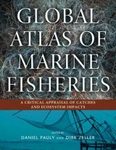![Aquaculture in the Ecosystem Aquaculture in the Ecosystem]()
Click to have a closer look
About this book
Contents
Customer reviews
Related titles
About this book
The global expansion of aquaculture production and its future role as a food supplier to human society has environmental, social and economic limitations, affecting marine ecosystems and socio-economic scales from local to global. The expansion is closely linked with human health requirements and societal needs for various goods and services provided by marine ecosystems.
This book provides a scientific forecast of the development in aquaculture with a focus on the environmental, technological, social and economic constraints that need to be resolved to ensure sustainable development of the industry and allow the industry to be able to feed healthy seafood products to the future generations. The chapters included discuss the most critical bottlenecks of the development encompassing subjects of understanding the environmental impacts, the current state-of-art in monitoring programs and in coastal zone management, the important interactions between wild and cultured organisms including release of non-native species into the wild, the current trends within the development of aquafeeds along with human health aspects as well as the political, socio-economic and economic trends within the industry including a chapter on approaches taken by Non Governmental Organisations (NGOs) to aquaculture. Finally the last chapter provides different future scenarios of the industry based on the identified bottlenecks.
Contents
Foreword Fish farm wastes in the ecosystem Paul Tett Monitoring of environmental impacts of marine aquaculture Marianne Holmer, Pia Kupka Hansen, Ioannis Karakassis, Joseph A Borgh and Patrick J Schembri Aquaculture and coastal space management in Europe: an ecological perspective Tim Dempster and Pablo Sanchez-Jerez Detrimental genetic effects of interactions between reared strains and wild populations of marine and anadromous fish and invertebrate species T.F. Cross, G. Burnell, J. Coughlan, S. Culloty, E. Dillane, P. McGinnity and E. Rogan Non-native Aquaculture Species Releases: Implications for Aquatic Ecosystems Elizabeth J. Cook, Gail Ashton, Marnie Campbell, Ashley Coutts, Stephan Gollasch, Chad Hewitt, Hui Liu, Dan Minchin, Gregory Ruiz and Richard Shucksmith Safe and nutritious aquaculture produce: Benefits and risks of alternative sustainable aquafeeds J. Gordon Bell and Rune Waagbo NGO approaches to minimizing the impacts of aquaculture: a review Katherine Bostick Aquaculture in the coastal zone: pressures, interactions and externalities David Whitmarsh and Maria Giovanna Palmieri Future trends in aquaculture: Productivity growth and increased production Frank Asche, Kristin H. Roll and Sigbjorn Tveteras Status and future perspectives of marine aquaculture Yngvar Olsen, Oddmund Otterstad and Carlos M. Duarte Epilogue
Customer Reviews
Edited By: M Holmer, K Black, CM Duarte, N Marbà and I Karakassis
326 pages, Tabs, figs
From the reviews: "Marine aquaculture is one of the fastest growing industries globally. ! Holmer ! and colleagues have compiled papers that describe the impact of fish waste on ecosystems, monitoring of impacts, competing coastal land demands, genetic pollution of wild stocks, inadvertent release of nonnative species, and challenges to sustainable feeding. ! Summing Up: Recommended. All readers." (J. Burger, Choice, Vol. 46 (2), October, 2008)






















![Les îles Saint-Paul et Amsterdam (Océan Indien Sud): Environnement Marin et Pêcheries [Saint-Paul and Amsterdam Islands (South Indian Ocean): Marine Environment and Fisheries]](http://mediacdn.nhbs.com/jackets/jackets_resizer_medium/26/260268.jpg?height=150&width=107)











